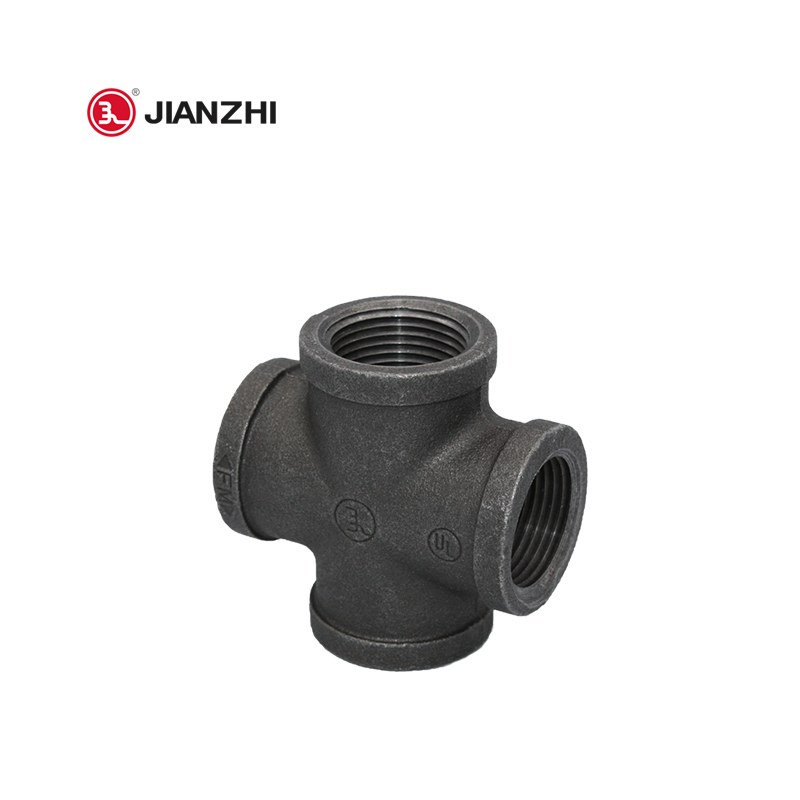In lab equipment frameworks, 4-way plumbing fittings play several specific functions:
- Fluid Distribution: These fittings are used to create branching pathways for fluid distribution within laboratory setups. They facilitate the connection of various equipment or devices to a centralized fluid source or multiple sources, allowing the controlled flow of liquids or gases between different components.
- Modular Design: The modular nature of 4-way plumbing fittings enables the construction of adaptable and customizable lab equipment frameworks. They allow for the easy integration of different components, such as pumps, filters, valves, or measurement instruments, into the framework.
- Versatile Configurations: These fittings enable the creation of diverse configurations for lab setups. They facilitate the arrangement of equipment in different orientations or layouts, optimizing space utilization and accessibility for experiments or processes.
- Interconnection of Equipment: 4-way plumbing fittings serve as connectors between various laboratory instruments, ensuring a seamless connection between different parts of an experimental setup or analytical system.
- Pressure Regulation and Control: They assist in controlling and regulating the pressure of fluids or gases within the lab equipment framework. Valves or control mechanisms can be attached to these fittings to manage flow rates or pressure levels as required by experiments or procedures.
- Experimental Setup Flexibility: Researchers can adjust and modify the configuration of lab equipment using these fittings. This adaptability allows for changes in experimental setups, accommodating different protocols or research requirements.
- Integration with Filtration Systems: 4-way plumbing fittings are integral in setting up filtration systems within laboratory frameworks. They connect filtration components like filter housings, membranes, or cartridges, allowing for fluid purification or separation processes.
- Aeration and Gas Handling: These fittings play a role in facilitating aeration or gas handling within lab equipment setups. 4 way plumbing They can be used in gas distribution systems or aeration units for creating controlled environments for experiments.
- Chemical Compatibility: Selecting appropriate materials for 4-way plumbing fittings ensures compatibility with the substances being handled in the laboratory. Materials chosen should withstand the chemicals or fluids passing through the fittings without degradation or reaction.
- Ease of Maintenance and Reconfiguration: The use of these fittings simplifies maintenance tasks and system reconfiguration. They allow for easy disassembly and reassembly, aiding in equipment cleaning, repairs, or modifications.
Overall, 4-way plumbing fittings contribute significantly to the functionality, adaptability, and precision of lab equipment frameworks, supporting a wide range of experimental setups, analytical procedures, and research activities within laboratory environments.
How are 4 way plumbing utilized in the creation of exterior signage structures?
In the creation of exterior signage structures, 4-way plumbing fittings can serve several key functions:
- Framework Construction: These fittings act as crucial joints in creating the framework for exterior signage structures. They facilitate the assembly of pipes to form the frame that supports the signage components.
- Versatile Design: 4-way plumbing fittings offer versatility in design. They allow for the creation of various shapes and sizes for signage structures, including rectangular, square, or custom-shaped frames based on the signage design requirements.
- Modular Assembly: These fittings enable modular assembly, allowing for easy disassembly and reassembly of signage structures. This feature facilitates transportation, installation, and maintenance of large signage elements.
- Secure Attachment Points: They provide secure attachment points for signage panels or boards. By connecting pipes at right angles, these fittings create stable surfaces for mounting signage elements securely.
- Customizable Angles: The fittings allow for the creation of angled or elevated signage structures. They can be used to join pipes at different angles, facilitating the construction of sloped or multi-level signs.
- Stability and Durability: 4-way plumbing fittings offer stability and durability, ensuring the structural integrity of exterior signage structures. They can withstand outdoor conditions, including wind, weather, and other environmental elements.
- Adaptability to Different Surfaces: These fittings can adapt to various surfaces, such as concrete, asphalt, or landscaping elements. They allow for the installation of signage structures in diverse outdoor settings.
- Ease of Installation: Using these fittings simplifies the installation process. Basic tools are typically sufficient for assembly, reducing installation time and labor costs.
- Aesthetic Appeal: While primarily functional, these fittings can contribute to the visual appeal of signage structures. Depending on the design, they can offer an industrial or modern aesthetic that complements the overall look of the signage.
- Space Utilization: The modular and customizable nature of these fittings enables efficient space utilization for signage structures. They allow for designs that maximize visibility while fitting within designated outdoor areas.
In summary, 4-way plumbing fittings provide a versatile and adaptable solution for creating durable, stable, and visually appealing exterior signage structures. Their ability to facilitate modular assembly, customization, and stability makes them valuable components in constructing signage that stands out in outdoor environments.
